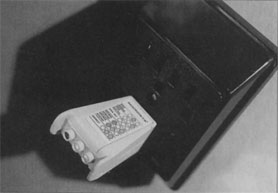|
Even the most talented recordist must plan carefully in order to survive the vagaries of fickle fate. An alarm system and a good insurance policy protect your studio against thieves and natural disasters. Secure (and perhaps a bit smug) in the knowledge that your guard is up, you may be quite literally shocked to discover that your projects, your precious gear, and perhaps your life could be at serious risk from a dreaded disease: bad grounding.
Most studio professionals have an encyclopedic collection of horror stories about the wages of electrical sin. At best, improper grounding causes unholy noise in the audio system, immediately labeling your recordings as amateurish or even unlistenable. Often, sensitive equipment displays mysterious behavior and requires unexpected pilgrimages to the repair shop. In the worst case, poor grounding could lead to electrocution or fire. Fortunately, the problem can be cured if you diagnose it in time and treat it promptly.
A properly wired and grounded system starts with the AC lines. But you also must consider your audio cables, whether your lines are balanced or unbalanced, what type of connectors or adapters you've used, and so on. We have a lot of ground to cover, so we've divided the discussion into two parts. In Part 1, we'll review the potentially hair-raising fundamentals of AC grounding, including both house and equipment-chassis grounding. Next month, we'll examine sane wiring schemes and rack-mounting strategies and establish a troubleshooting procedure for minimizing sonic mayhem.
One Leg To Stand On
It's important to determine whether you have a clean power source. You must know if there is anything else drawing power from the same AC circuit as your equipment.
If you don't already know which circuit breakers control which outlets and lights in your building, take a few minutes to find out. Get a few radios or lamps, plug them into every wall socket in the house (including the outlets where your equipment is plugged in), and turn them on. (Make sure your computer and music gear are turned off.) Find the breaker panel, throw the breaker for each circuit, and see what stays on and what goes out. Write down which outlets and lights are controlled by each breaker.
The best news would be that your equipment is the only thing on its circuit. The worst news would be that half the house is on the same small circuit you want to use for the studio gear. (This is more common in older houses and apartment buildings.) If you have bad luck, you must find out if there still is enough power on that circuit to power the equipment you want to run and identify any electrical devices that might cause equipment problems.
Troublesome devices include any appliance with an electric motor that turns on and off. Refrigerators, dishwashers, clothes washers and dryers, trash compactors, and microwaves are common culprits. Fluorescent lights and cheap dimmer packs also should not share a circuit with audio gear. These devices cause power fluctuations, hums, clicks, and pops when you least expect them. |
The Right Stuff
Whether you are assembling a new studio, or trying to debug an existing system, one of your first tasks is to determine if you are drawing too much power from the circuit to which your equipment is connected.
Calculating the power consumption of your equipment is easy; most manufacturers give you this information on the back plate of the equipment or in the technical section of the manual. However, while equipment is rated in terms of power requirements (watts), circuit breakers arc rated in terms of current (amperes). Because the voltage is more or less constant at 117 VAC, current and power are directly proportional, which leads people to use them interchangeably.
You can use the equation Current = Power/Voltage (I = P/V, derived from Ohm's Law; see the sidebar on p. 74 in April 1990 EM) to figure the electrical current required by each piece of equipment. Keep in mind that the output power of your amp doesn't correlate to the amount of current it draws; use the electrical-power requirement of the amp in your calculations.
Add up the current requirements for all gear on the circuit and compare the total with the maximum current rating indicated on the circuit breaker (see the sidebar "Power to the People"). If the total current requirement exceeds the current rating of the circuit, the system is unsafe, and the breaker will repeatedly kick out.
One nice thing about electronic music equipment is that most of it doesn't require much power. Your mixer, tape deck, and power amps consume most of the power, but even so an average home studio should run easily on one 20-amp circuit, as long as there is nothing else on the circuit. This is a good thing, because you can run into major problems (such as out-of-phase wiring or widely separated ground potentials) when you use more than one circuit. So make life simple by keeping all studio gear on the same circuit.
Checking the House Ground
In newer houses, modern electrical codes usually guarantee a good ground, but this may not be the case in older houses and apartments. The best way to quickly test your outlets is to use a 3-prong AC outlet analyzer (available from Radio Shack and most other electronics stores; see Fig. 1), which indicates whether the AC hot wire's polarity is reversed or the neutral (left prong) or ground (third prong) is disconnected.

FIG. 1: Three-prong AC-outlet analyzers reveal whether an outlet's hot, neutral, and ground terminals are disconnected, or the hot terminal is reverse-wired with either neutral or ground.
|
Neal Brighton is an independent producer/engineer and co-owner of Sound and Vision studios in San Francisco.
A Buddhist seer once told EM managing editor Steve O that his purpose in this incarnation was to learn about power. He never understood until now.
|